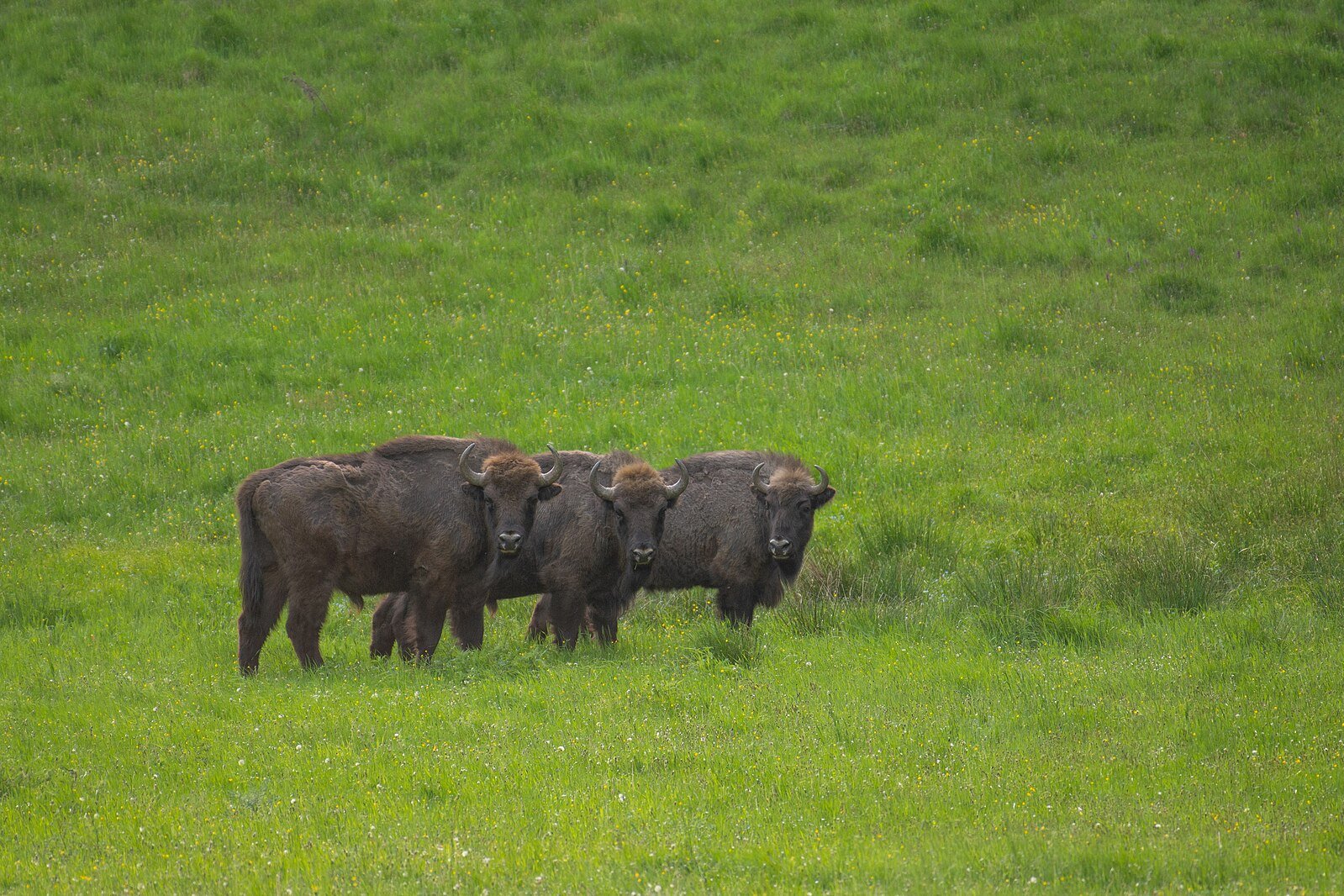Bison Revival Boosts Carbon Storage in Romania
In the early morning mist of Romania's Țarcu Mountains, a herd of European bison grazes peacefully. Their massive forms move slowly through the grasslands, a sight that had been absent from this region for centuries. This reintroduction is more than a conservation success; it's a crucial step in enhancing carbon storage and combating climate change.
Recent studies from the Yale School of the Environment reveal that these bison are transforming approximately 20 square miles of grassland into a significant carbon sink. These revitalized grasslands now capture an additional 54,000 tons of carbon annually, equivalent to the emissions of about 43,000 cars. This increase in carbon sequestration is directly linked to the presence and activities of the bison, highlighting the essential role large animals play in mitigating climate change.
A European bison (Bison bonasus). Image by Charles J Sharp.
Once widespread across the continent, European bison populations plummeted due to habitat loss and hunting. Their reintroduction in the Țarcu Mountains is part of a broader conservation strategy known as trophic rewilding. This approach focuses on restoring animal populations and their ecological roles, including seed dispersal, herbivory, and nutrient cycling. These activities enhance plant growth and soil health, leading to increased carbon storage.
The impact of the bison extends beyond their immediate presence. Through grazing, trampling, and nutrient distribution, these large herbivores create diverse plant communities. This diversity fosters a more resilient ecosystem capable of capturing and storing more carbon. The interactions between the bison and their habitat demonstrate an important principle: protecting and restoring animal species can significantly enhance natural carbon capture and storage.
Natural Solutions and Trophic Rewilding
Natural climate solutions traditionally focus on plants, soils, and sediments. While these elements are vital, the role of animals in the carbon cycle has been largely overlooked. Evidence from the Țarcu Mountains and other ecosystems shows that animals like bison are crucial in the fight against climate change. The concept of 'animating the carbon cycle' involves integrating wild animal conservation into climate strategies. By allowing animals to reach meaningful population densities and perform their ecological functions, we can create dynamic landscapes that are more effective at sequestering carbon. This requires a shift from static conservation models to more holistic approaches that recognize the interconnectedness of species and their environments.
Romania’s bison reintroduction project exemplifies this approach. As the bison thrive, they contribute to a healthier, more carbon-efficient ecosystem. This success in the Țarcu Mountains serves as a model for other regions where large animals have been depleted or are at risk.
European bison with calves. Image by Charles J. Sharp.
The scientific community is increasingly recognizing the importance of this work. Research shows that the functional roles of animals can enhance carbon storage across various ecosystems. For instance, in tropical forests, the presence of diverse mammal species can increase tree and soil carbon storage by four to five times. Similar benefits have been observed in marine ecosystems, where the activities of species like sea otters and whales can substantially boost carbon sequestration.
To fully realize the benefits of trophic rewilding, policies must support the restoration of these animal populations. This involves protecting habitats, mitigating human-wildlife conflicts, and fostering local community engagement. The gains in carbon storage observed in Romania highlight the urgency of integrating wildlife conservation into broader climate strategies.
Three European bison in the mountains of Romania. Image by Victoria Donos, Fundația Conservation Carpathia.
As the sun sets over the Țarcu Mountains, the bison continue their vital work, shaping the landscape and enhancing its capacity to store carbon. The reintroduction of European bison in Romania's Țarcu Mountains illustrates the significant role large animals can play in climate mitigation. By restoring these keystone species, we can enhance carbon sequestration and move towards a more sustainable future. The findings from Yale’s research underscore the need for a paradigm shift in natural climate solutions, one that embraces the full spectrum of biodiversity to tackle the pressing challenge of climate change. As we observe the positive impact of these bison, it becomes clear that the path to a healthier planet involves the revival of its wild inhabitants.



